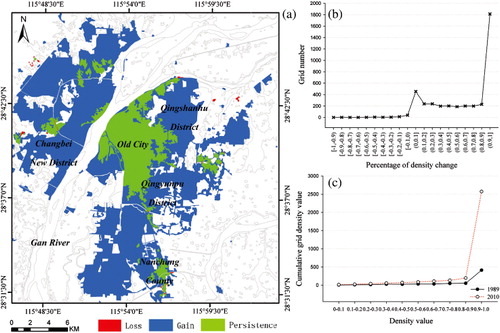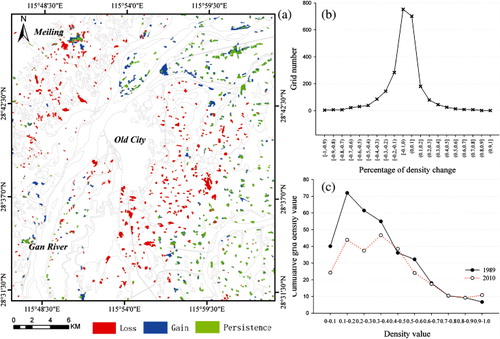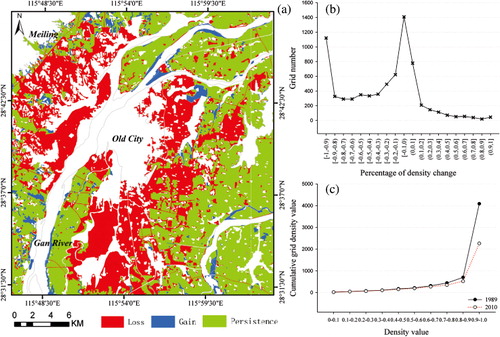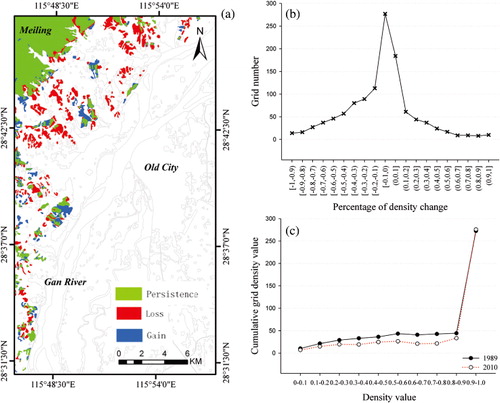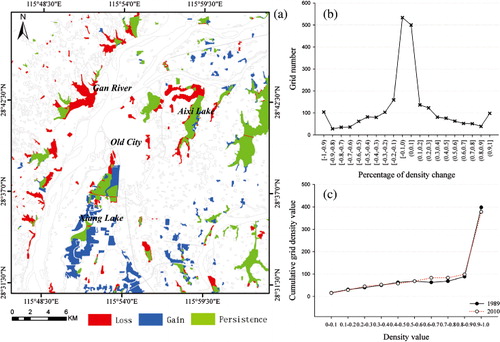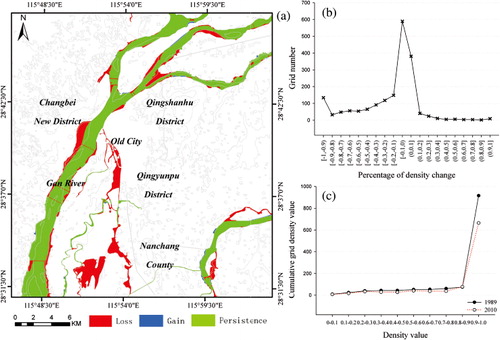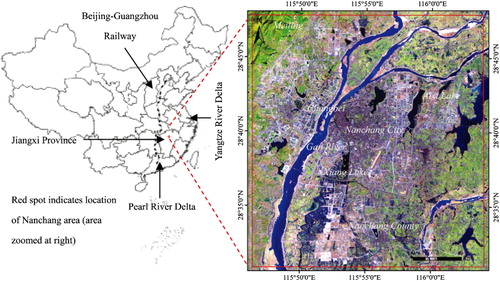Figures & data
Table 1. Land use/cover categories for which changes were detected during study period.

Table 2. Observed sample matrix (confusion matrix), with classifications for 2010 (numbers in bold) and 1989 (numbers in italics).
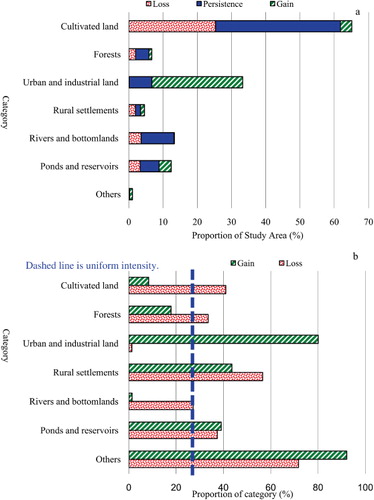
Table 3. Cross-tabulation matrix indicating systematic transition among categories.
Table 4. Changes in number and average area (km2) of patches of each category during 1989–2010 (percentages of the changes were calculated based on category data for 1989).
